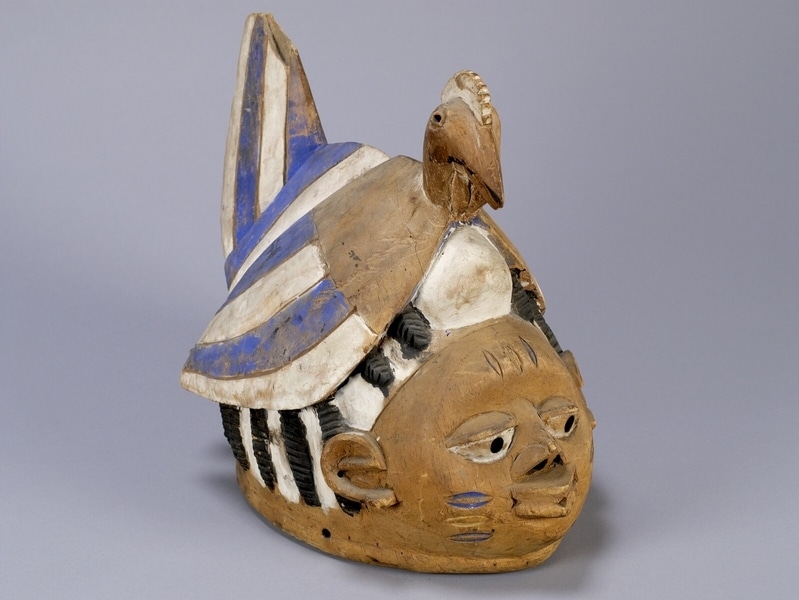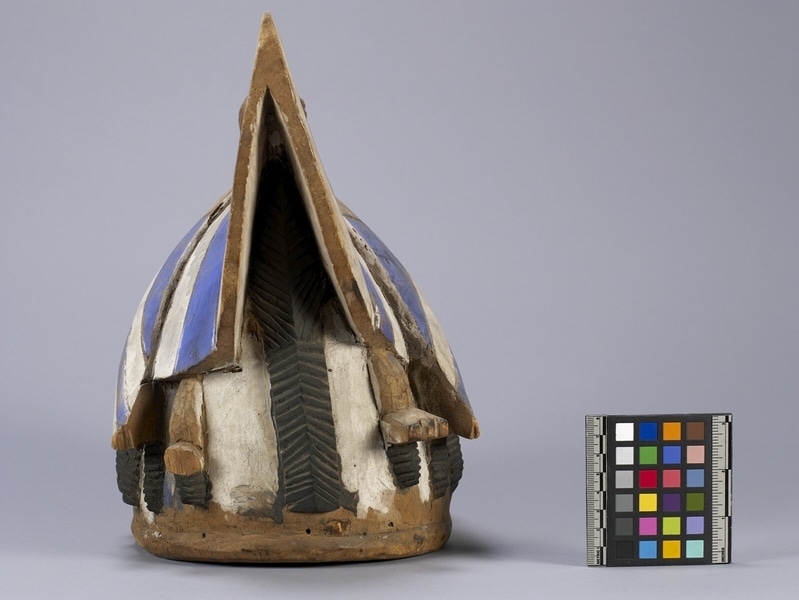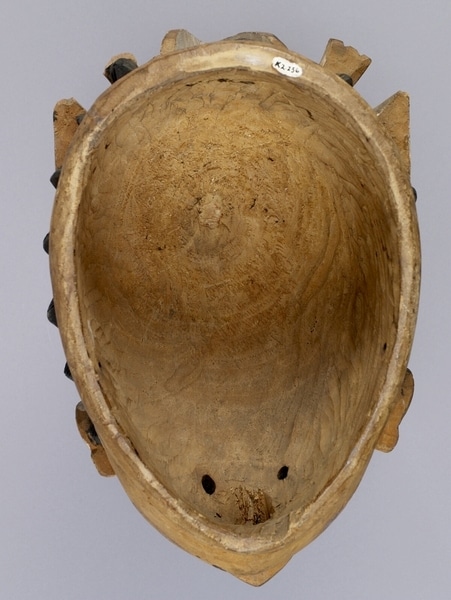Gelede Mask Item Number: K2.236 from the MOA: University of British Columbia




Description
Headdress, or mask, depicting a human face with pointed lips, stylized ears, and raised rows of hair with incised lines, and three incised almond-shaped clan scarifications on the cheeks as well as the forehead. A chicken is depicted sitting on top of the the figure's head with its wings relaxed downwards, tail pointing upwards, and legs dangling down at the back of the head. The headdress is painted with white eyes, a white scalp with black hair, blue scarifications, and alternating white and blue bands delineate the chicken's feathers.
History Of Use
The gélède mask is worn more like a headdress, on top of the head, by male dancers. The masks are worn during Yoruba Gelede festivals which honour women, both living and dead, in particular the powerful "Mothers" (awon iya wa), a group that includes female ancestors and deities, as well as elderly women of the community. When dancers perform the Gelede dance they are displaying the powers of their female ancestors, who are considered to the beginning of the nation, makers of community and the protectors of children. They have the ability to affect the wellbeing of individuals or the community in positive and negative ways. The Gelede ceremony is divided into two parts: the efe, which takes place at night and features a humorist praying for the community, and the ijo osan, the daytime dance that is commonly referred to as Gelede.
Cultural Context
Gelede festival dances.
Iconographic Meaning
One narrative for the origin of the Gélède dance is that after Yemoja, the water goddess and mother of all spirits, performed a spirit dance by the river she gave birth to two children. Her daughter was a dancer and was called Gelede because of her weight; Yemoja’s son was called Efe because he was a humorist. The names of the children and their traits could then inform the parts of the Gelede ceremony. Female gelede masks are larger and are used for dancing, and the efe nighttime ceremony involves a humorist. Gelede masks are composed of two parts. The lower part is the face of a woman, while the upper part is often a superstructure with a strong design. The reserved qualities that are favoured in women are represented in the lower part, which contrasts with the vitality and dynamism of the upper part. In this mask, three scars are depicted on the forehead and either cheek to mimic Yoruba facial scars. A hen is depicted on top of the figure’s head to symbolize fertility and motherhood.
Item History
- Made in Nigeria between 1900 and 1960
- Owned by Berkeley Galleries Ltd. before March 1960
- Received from Berkeley Galleries Ltd. (Seller) and Leon & Thea Koerner Foundation (Funding source) during March 1960
What
Who
- Culture
- Yoruba
- Previous Owner
- Berkeley Galleries Ltd.
- Received from
- Berkeley Galleries Ltd. (Seller) and Leon & Thea Koerner Foundation (Funding source)
Where
- Holding Institution
- MOA: University of British Columbia
- Made in
- Nigeria
When
- Creation Date
- between 1900 and 1960
- Ownership Date
- before March 1960
- Acquisition Date
- during March 1960
Other
- Condition
- fair
- Current Location
- Case 98
- Accession Number
- 0023/0022